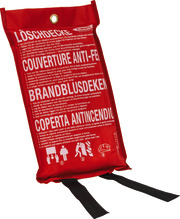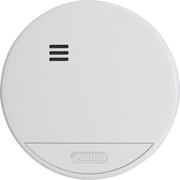
Fire protection guide To extinguish correctly
To be able to act in an emergency, you should know the answers to the following questions: How does a fire start in the first place? How do I extinguish it correctly? Why do I have to pay attention to fire classes when extinguishing?
In this part of our ABUS fire protection guide, you will find rules, tips and information on the following topics:
Read moreShow less

7 RULES FOR CORRECT DELETION
- With the wind: Attack the fire downwind
- From the point of origin to the puddle: Extinguish dripping and flowing fires from top to bottom
- For wall fires: Always extinguish from bottom to top
- Extinguish in a targeted manner: Aim at the embers, not at the flames
- For larger incipient fires: Use several fire extinguishers at the same time, do not use them one after the other: Observe the fire site and extinguish again if necessary
- Ensure replenishment: Replace the fire extinguisher after use
Source: Brandschutz Zentrale


















